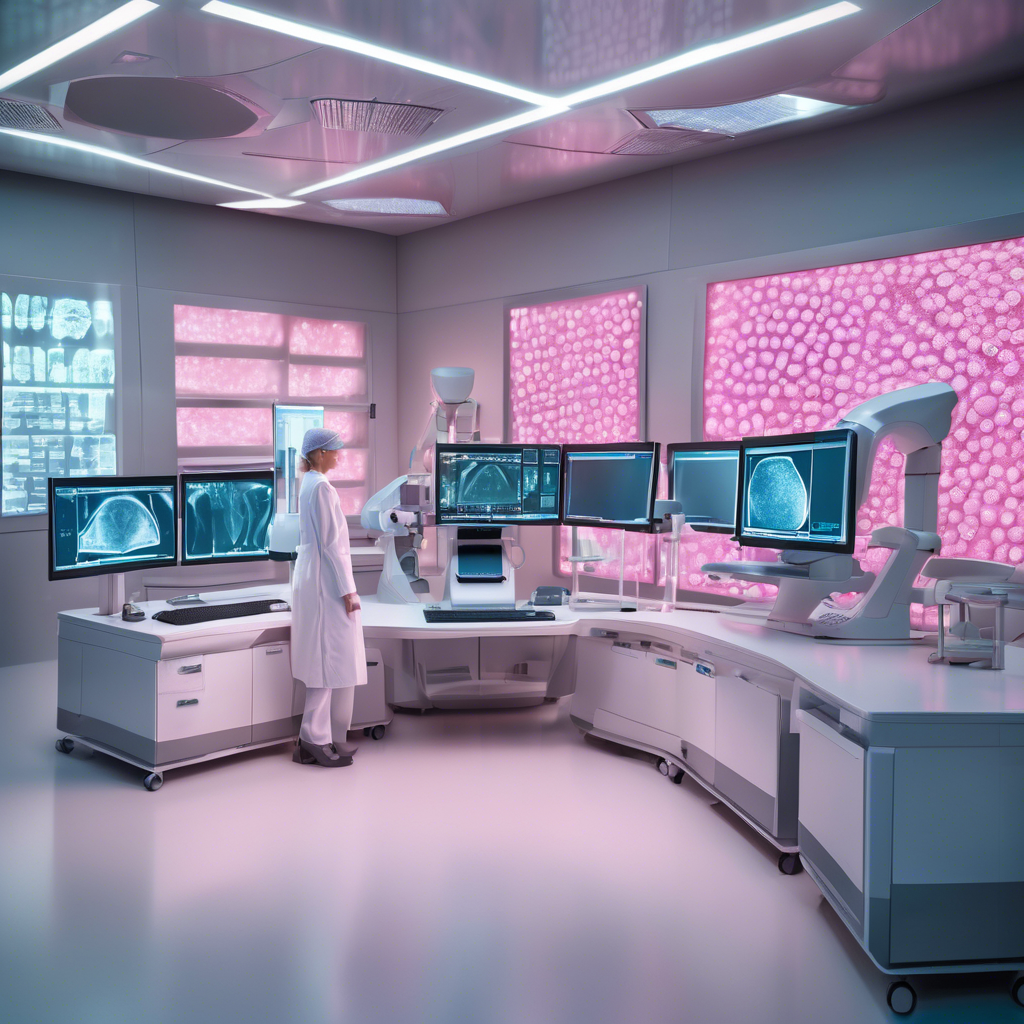
A groundbreaking advancement in medical diagnostics has emerged from a team of researchers who have developed a sophisticated artificial intelligence (AI) system capable of detecting breast cancer with unprecedented accuracy. This revolutionary AI algorithm scrutinizes mammogram images, identifying subtle patterns that are often elusive to human specialists. Traditional mammography, though widely used, relies heavily on the visual interpretation skills of radiologists, which can sometimes lead to errors due to the ambiguity of signs or the complicating factors like dense breast tissue. This new AI system substantially minimizes such errors by reducing both false positives and false negatives, challenges that have persisted in breast cancer screening for decades. By harnessing the power of machine learning, this AI can parse through complex imaging data to reveal insights that elevate the precision of diagnosis, offering a promising leap forward in early cancer detection.
In a recent study assessing the AI system’s performance, the results were truly remarkable. The AI achieved an accuracy rate of 95 percent in detecting breast cancer, a significant improvement compared to the approximately 85 percent accuracy typical of conventional mammographic methods. This means the AI is better equipped to differentiate between benign and malignant tissues, enabling healthcare providers to undertake more informed clinical decision-making. Such improvements in diagnostic accuracy are not only beneficial for the patient’s physical health but also crucial for easing the psychological burden associated with misdiagnosis. The capacity for earlier and more reliable detection afforded by this technology could change the landscape of breast cancer prognosis, potentially saving countless lives through timely intervention and more precise treatment planning.
What sets this AI system apart is its construction from cutting-edge deep learning models trained on vast datasets of mammograms from diverse demographic groups. This diversity ensures that the AI’s effectiveness remains robust and widely generalizable, overcoming one of the critical challenges in AI development: bias and limited applicability. The model maintains high sensitivity, accurately identifying those with cancer, and high specificity, correctly ruling out those without cancer—both of which are essential metrics for any screening tool. Interestingly, the development team’s emphasis on validation across various populations highlights an important future direction for AI in healthcare: inclusivity and personalized applicability, which are vital for achieving equitable health outcomes across different communities worldwide.
Beyond diagnostic accuracy, this AI approach holds tremendous promise for enhancing clinical workflow efficiency. Radiologists, often burdened by heavy workloads and time constraints, stand to benefit from this decision-support tool offering detailed analyses and nuanced risk assessments of mammograms. Rather than replacing human expertise, it complements it by flagging cases that require urgent attention, thus optimizing resource allocation in clinical settings. This harmonious integration of human judgment and artificial intelligence exemplifies where medical technology is headed—a collaborative future where machines enhance but do not overshadow the nuanced skills of healthcare professionals. Such synergy could not only improve patient care but also reduce burnout among practitioners, a common issue in modern medicine.
While experts are optimistic about this AI technology’s role in transforming breast cancer screening, they advise caution and emphasize the need for ongoing research, extensive clinical trials, and robust regulatory scrutiny to address ethical concerns and guarantee patient safety. Regulatory agencies will require comprehensive evidence of the AI system’s efficacy before endorsing it for routine clinical use. Moreover, there is exciting potential for future iterations of such AI tools to facilitate personalized medicine. By integrating imaging data with other patient-specific information like genetics and lifestyle factors, AI could soon tailor screening schedules and treatment plans uniquely suited to individual risk profiles. This alignment with the principles of precision healthcare heralds a new era where medical diagnostics and therapy are not just reactive but proactively customized to each patient’s needs, enhancing outcomes and quality of life on a global scale.
In the fight against breast cancer—a disease impacting millions of women worldwide—this AI development represents a transformative milestone. It underlines an inspiring trend in which artificial intelligence is poised to revolutionize not only cancer detection but the broader spectrum of medical diagnostics and patient management. As technological innovations continue to advance rapidly, integrating AI into everyday healthcare practice promises to usher in an era of enhanced accuracy, efficiency, and personalized care. This leap forward holds the tantalizing prospect of significantly reducing breast cancer mortality and morbidity, ultimately improving lives and healthcare systems worldwide. The future of medicine, undoubtedly, will be shaped by such intelligent technologies working hand in hand with human expertise to deliver better health for all.
#BreastCancerDetection #AIinHealthcare #MedicalInnovation #PrecisionMedicine #CancerScreening #ArtificialIntelligence #HealthcareTechnology
Leave a Reply